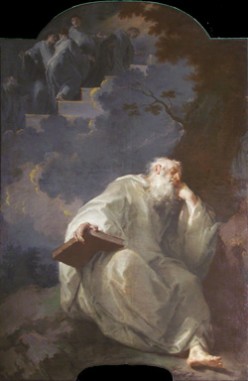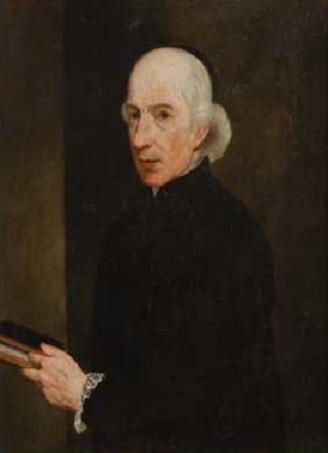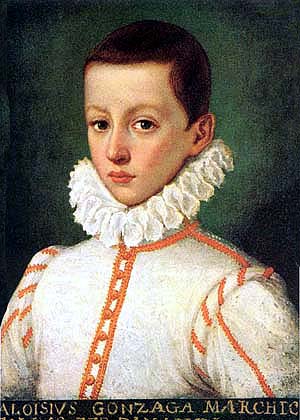|
Giuseppe Bazzani
Giuseppe Bazzani (23 September 1690 – 17 August 1769) was an Italian painter of the Rococo. Biography Born in Mantua to a goldsmith, Giovanni Bazzani, early on he apprenticed with the Parmesan painter Giovanni Canti (1653–1715). A fellow pupil was Francesco Maria Raineri. He spent most of his life in Mantua. From 1752, he was faculty, and from 1767, director of the ''Accademia di Belle Arti'' of Mantua. While ensconced in a declining provincial city, he absorbed international influences. His loose brushstrokes, fervid and often dark emotionalism, and tortured poses, which recall at times later expressionism, display stylistic tendencies more typical of Lombardy. Numerous artists, including Fetti, Bencovich, Rubens, and Magnasco are said to have influenced him, although the number and diversity of the artists suggested hints that he had an idiosyncratic and unique synthesis for his time. Among his early works are paintings of the ''Miracles of Pius V'', the ''Conversion of ... [...More Info...] [...Related Items...] OR: [Wikipedia] [Google] [Baidu] |
Mantua
Mantua ( ; it, Mantova ; Lombard language, Lombard and la, Mantua) is a city and ''comune'' in Lombardy, Italy, and capital of the Province of Mantua, province of the same name. In 2016, Mantua was designated as the Italian Capital of Culture. In 2017, it was named as the European Capital of Gastronomy, included in the Eastern Lombardy District (together with the cities of Bergamo, Brescia, and Cremona). In 2008, Mantua's ''centro storico'' (old town) and Sabbioneta were declared by UNESCO to be a World Heritage Site. Mantua's historic power and influence under the Gonzaga family has made it one of the main artistic, culture, cultural, and especially musical hubs of Northern Italy and the country as a whole. Having one of the most splendid courts of Europe of the fifteenth, sixteenth, and early seventeenth centuries. Mantua is noted for its significant role in the history of opera; the city is also known for its architectural treasures and artifacts, elegant palaces, and the m ... [...More Info...] [...Related Items...] OR: [Wikipedia] [Google] [Baidu] |
Ducal Palace Of Mantua
The Palazzo Ducale di Mantova ("Ducal Palace") is a group of buildings in Mantua, Lombardy, northern Italy, built between the 14th and the 17th century mainly by the noble family of House of Gonzaga, Gonzaga as their royal residence in the capital of their Duchy of Mantua, Duchy. The buildings are connected by corridors and galleries and are enriched by inner courts and wide gardens. The complex includes some 500 rooms and occupies an area of c. 34,000 m2, which make it the sixth largest palace in Europe after the Apostolic Palace, palaces of the Vatican, the Louvre Palace, the Palace of Versailles, the Royal Palace of Caserta and the Palace of Fontainebleau, Castle of Fontainebleau. It has more than 500 rooms and contains seven gardens and eight courtyards. Although most famous for Andrea Mantegna, Mantegna's frescos in the Camera degli Sposi (Wedding Room), they have many other very significant architectural and painted elements. The Gonzaga family lived in the palace from 13 ... [...More Info...] [...Related Items...] OR: [Wikipedia] [Google] [Baidu] |
Bazzani - Sant'Antonio Da Padova Col Bambino
Bazzani is an Italian surname most common in the region of Emilia-Romagna, Italy Notable people with the surname include: * Bazzani (footballer), full name Olivério Bazzani Filho (1935–2007), Brazilian footballer * Bazzaninho, full name Oliver Roberto Bazzani (1941–2016), Brazilian footballer * Cesare Bazzani (1873 - 1939), Italian architect *Domenico Conti Bazzani (1740-1817), Italian painter *Fabio Bazzani (born 1976), Italian footballer *Francesco Maria Bazzani (1650-1700), Italian baroque composer * Gaspare Bazzani (1701–1780), Italian painter *Giuseppe Bazzani (1690-1769), Italian painter *Luigi Bazzani Luigi Bazzani, also called Il Bazzanetto, was an Italian painter, illustrator, and watercolorist. He was born November 8, 1836, in Bologna, Italy. Bazzani studied at Bologna's Accademia di Belle Arti then traveled to France, Germany and, event ... (1836-1927), Italian painter, watercolorist, and theater set designer * Loris Bazzani (1984 - present), Italian computer ... [...More Info...] [...Related Items...] OR: [Wikipedia] [Google] [Baidu] |
Apollo E Le Muse
Apollo, grc, Ἀπόλλωνος, Apóllōnos, label=genitive , ; , grc-dor, Ἀπέλλων, Apéllōn, ; grc, Ἀπείλων, Apeílōn, label=Arcadocypriot Greek, ; grc-aeo, Ἄπλουν, Áploun, la, Apollō, la, Apollinis, label=genitive, , ; , is one of the Olympian deities in classical Greek and Roman religion and Greek and Roman mythology. The national divinity of the Greeks, Apollo has been recognized as a god of archery, music and dance, truth and prophecy, healing and diseases, the Sun and light, poetry, and more. One of the most important and complex of the Greek gods, he is the son of Zeus and Leto, and the twin brother of Artemis, goddess of the hunt. Seen as the most beautiful god and the ideal of the ''kouros'' (ephebe, or a beardless, athletic youth), Apollo is considered to be the most Greek of all the gods. Apollo is known in Greek-influenced Etruscan mythology as ''Apulu''. As the patron deity of Delphi (''Apollo Pythios''), Apollo is an oracula ... [...More Info...] [...Related Items...] OR: [Wikipedia] [Google] [Baidu] |
Giuseppe Bazzani - The Agony Of Christ In The Garden - WGA01525
Giuseppe is the Italian form of the given name Joseph, from Latin Iōsēphus from Ancient Greek Ἰωσήφ (Iōsḗph), from Hebrew יוסף. It is the most common name in Italy and is unique (97%) to it. The feminine form of the name is Giuseppina. People with the given name Artists and musicians * Giuseppe Aldrovandini (1671–1707), Italian composer * Giuseppe Arcimboldo (1526 or 1527–1593), Italian painter * Giuseppe Belli (singer) (1732–1760), Italian castrato singer * Giuseppe Gioachino Belli (1791–1863), Italian poet * Giuseppe Castiglione (1829–1908) (1829–1908), Italian painter * Giuseppe Giordani (1751–1798), Italian composer, mainly of opera * Giuseppe Ottaviani (born 1978), Italian musician and disc jockey * Giuseppe Psaila (1891–1960), Maltese Art Nouveau architect * Giuseppe Sammartini (1695–1750), Italian composer and oboist * Giuseppe Sanmartino or Sammartino (1720–1793), Italian sculptor * Giuseppe Santomaso (1907–1990), Italian painter * Giu ... [...More Info...] [...Related Items...] OR: [Wikipedia] [Google] [Baidu] |
Neoclassicism
Neoclassicism (also spelled Neo-classicism) was a Western cultural movement in the decorative and visual arts, literature, theatre, music, and architecture that drew inspiration from the art and culture of classical antiquity. Neoclassicism was born in Rome largely thanks to the writings of Johann Joachim Winckelmann, at the time of the rediscovery of Pompeii and Herculaneum, but its popularity spread all over Europe as a generation of European art students finished their Grand Tour and returned from Italy to their home countries with newly rediscovered Greco-Roman ideals. The main Neoclassical movement coincided with the 18th-century Age of Enlightenment, and continued into the early 19th century, laterally competing with Romanticism. In architecture, the style continued throughout the 19th, 20th and up to the 21st century. European Neoclassicism in the visual arts began c. 1760 in opposition to the then-dominant Rococo style. Rococo architecture emphasizes grace, ornamentati ... [...More Info...] [...Related Items...] OR: [Wikipedia] [Google] [Baidu] |
Domenico Conti Bazzani
Domenico Maria Conti or Conti Bazzani (or Bazzano/Bozani) (Mantua, 1740 - Rome, 19 February 1815) was an Italian painter, bridging Rococo and Neoclassical styles. He is described as a disciple, and adoptive son of Giuseppe Bazzani, who was director of the Academy of Mantua after 1767. History He studied in the Academy of Mantua under Bazzani, and was awarded gold medals in competitions in 1765 and 1766. In 1769, his essay on a young ''Scipio Africanus'' was also awarded gold medals, but he did not accept a title of master, but a position teaching figure painting. Among his works in Mantua, he painted in the Royal Palace and in the church of San Zenone. The ''Jesus Nazarene'' in the Cathedral was painted during his stay in Rome. In 1770, Conti moved to Rome, where he found papal patronage, trained with Pompeo Batoni, and was able to establish an active studio. Among his pupils were Giuseppe Tominz and Giuseppe Bossi. It is reputed that Vincenzo Camuccini and Pietro Benvenuti ... [...More Info...] [...Related Items...] OR: [Wikipedia] [Google] [Baidu] |
Alexander The Great
Alexander III of Macedon ( grc, wikt:Ἀλέξανδρος, Ἀλέξανδρος, Alexandros; 20/21 July 356 BC – 10/11 June 323 BC), commonly known as Alexander the Great, was a king of the Ancient Greece, ancient Greek kingdom of Macedonia (ancient kingdom), Macedon. He succeeded his father Philip II of Macedon, Philip II to the throne in 336 BC at the age of 20, and spent most of his ruling years conducting a lengthy military campaign throughout Western Asia and ancient Egypt, Egypt. By the age of thirty, he had created one of the List of largest empires, largest empires in history, stretching from Greece to northwestern Historical India, India. He was undefeated in battle and is widely considered to be one of history's greatest and most successful military commanders. Until the age of 16, Alexander was tutored by Aristotle. In 335 BC, shortly after his assumption of kingship over Macedon, he Alexander's Balkan campaign, campaigned in the Balkans and reasserted control ... [...More Info...] [...Related Items...] OR: [Wikipedia] [Google] [Baidu] |
Borgoforte
Borgoforte is a ''frazione'' of the ''comune'' (municipality) of Borgo Virgilio in the Province of Mantua in the Italian region Lombardy, located about southeast of Milan and about southwest of Mantua. In 2014 it merged with Virgilio to form the municipality of Borgo Virgilio. It is home to a ''Rocca'' (castle or fortress), founded by the House of Gonzaga in the 13th century. After various vicissitudes, it was an important stronghold of the Austrian Empire in the Kingdom of Lombardy–Venetia The Kingdom of Lombardy–Venetia ( la, links=no, Regnum Langobardiae et Venetiae), commonly called the "Lombardo-Venetian Kingdom" ( it, links=no, Regno Lombardo-Veneto, german: links=no, Königreich Lombardo-Venetien), was a constituent land ..., being captured by Italian troops during the Third Italian Independence War in 1866. References Cities and towns in Lombardy {{Mantua-geo-stub ... [...More Info...] [...Related Items...] OR: [Wikipedia] [Google] [Baidu] |
Aloysius Gonzaga
Aloysius de Gonzaga ( it, Luigi Gonzaga; 9 March 156821 June 1591) was an Italian aristocrat who became a member of the Society of Jesus. While still a student at the Roman College, he died as a result of caring for the victims of a serious epidemic. He was beatified in 1605 and canonized in 1726. Early life Gonzaga was born the eldest of seven children, at his family's castle in Castiglione delle Stiviere, between Brescia and Mantua in northern Italy in what was then part of the Duchy of Mantua, into the illustrious House of Gonzaga. "Aloysius" is the Latin form of Aloysius de Gonzaga's given name in Italian, Luigi. Gonzaga was the son of Ferrante de Gonzaga (1544–1586), Marquis of Castiglione, and Donna Marta Tana di Santena, daughter of a baron of the Piedmontese Della Rovere family. His mother was a lady-in-waiting to Isabel, the wife of Philip II of Spain. As the first-born son, he was in line to inherit his father's title and status of Marquis. His father assumed t ... [...More Info...] [...Related Items...] OR: [Wikipedia] [Google] [Baidu] |
Vasto Di Goito
Vasto ( Abruzzese: '; grc, Ἱστόνιον, Histonion}, la, Histonium) is a ''comune'' on the Adriatic coast of the Province of Chieti, in southern Abruzzo, Italy. During the Middle Ages it was called d''Guastaymonis'', '' Vasto d'Aimone'' or ''Waste d'Aimone''. Fascist Italy called the city ''Istonio'', but it has been renamed Vasto in 1944. History Classical According to tradition, the town was founded by Diomedes, the Greek hero. The earliest archaeological relics date to 1300 BC. Histonium was one of the key towns of the Frentani, located on the Adriatic coast, about south of the promontory called Punta Penna. The city was noted by all the geographers among the towns of the Frentani and apparently under Julius Caesar did not obtain the rank of a ''colonia'', but continued to bear the title of a ''municipium'', as we learn from some inscriptions. Under the Roman Empire, the municipium of Histonium was a flourishing and opulent municipal town, and this is further atteste ... [...More Info...] [...Related Items...] OR: [Wikipedia] [Google] [Baidu] |
Luke The Evangelist
Luke the Evangelist (Latin: '' Lucas''; grc, Λουκᾶς, '' Loukâs''; he, לוקאס, ''Lūqās''; arc, /ܠܘܩܐ לוקא, ''Lūqā’; Ge'ez: ሉቃስ'') is one of the Four Evangelists—the four traditionally ascribed authors of the canonical gospels. The Early Church Fathers ascribed to him authorship of both the Gospel of Luke and the Acts of the Apostles. Prominent figures in early Christianity such as Jerome and Eusebius later reaffirmed his authorship, although a lack of conclusive evidence as to the identity of the author of the works has led to discussion in scholarly circles, both secular and religious. The New Testament mentions Luke briefly a few times, and the Epistle to the Colossians refers to him as a physician (from Greek for 'one who heals'); thus he is thought to have been both a physician and a disciple of Paul. Since the early years of the faith, Christians have regarded him as a saint. He is believed to have been a martyr, reportedly having bee ... [...More Info...] [...Related Items...] OR: [Wikipedia] [Google] [Baidu] |








